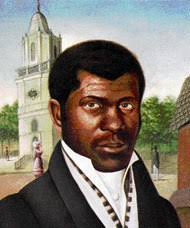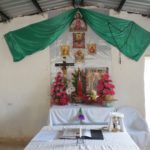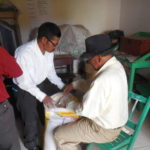Whenever I think of Catholic missionaries, I usually think of a priest or religious sister traveling down the Amazon river or walking through a jungle in Africa. Never do I image a hairdresser in New York City. Today’s missionary hero, however, was a Haitian man who was, indeed, a New York hairdresser. His name was Pierre Toussaint.
Pierre was born in slavery in Haiti in 1766 on a plantation owned by Mr. Jean Berard. From the time he was a little boy, Pierre was noted for his intelligence and sunny disposition. His grandmother taught him how to read and write, and Mr. Berard, who noted how bright young Pierre was, let him use his extensive library for reading and studying. The Berards loved Pierre so much that they treated him basically as a son.
Fearing that an insurrection was coming to Haiti, the Berards left Haiti and moved to New York City in 1787. Pierre was 21 at the time he was brought to New York.
The Berards did not want Pierre’s talents to go to waste, so they apprenticed him out to a professional hairdresser so he could learn the trade. Pierre not only learned how to be a hairdresser, he excelled at it. Soon, the wealthiest women of New York flocked to him to have him do their hair. Pierre, a very prudent young man, saved his money well. Soon he was able to buy freedom for his sister. Upon the death of the Berards, he himself became free when he was forty-one years of age.
Although Pierre made excellent money and could have been one of the wealthiest men of New York City, he was noted for giving away much of his money for the poor and charities that served the poor. But not only was Pierre generous with his money, he was also generous with his time. Because he was such a beloved figure in the city, the leading families of New York sought him out to be their confidant. Many called him “Our Saint Pierre.”
Every day, Pierre strengthened his spiritual life with Mass. From this foundation, he engaged in his amazing projects. For example, he started an orphanage for Black children. Then, he founded a school for them. He obtained employment for French widows and obtained freedom for many enslaved people in New York. He and his wife adopted his niece when his sister died, and he anonymously gave money to aristocratic families who had lost their fortunes.
One of the things Pierre is noted for is the homework assignments he gave to his little niece whom he adopted. He had her write him letters in both English and French on a regular basis. These letters, in which she described New York City through her young eyes, are in a public library today. They are remarkable in that they show New York City through a child’s eyes in the early 1800’s.
Pierre died at the age of eighty-seven. People from all over New York City packed the church for Pierre’s funeral.
In 1990, Cardinal O’Connor of New York exhumed his body from a Mott Street cemetery and had it reinterred in the crypt below the altar of St. Patrick’s Cathedral on Fifth Avenue, one of the most famous churches in the world. In 1996, Pope John Paul II declared Pierre Toussaint, Venerable.
Though he could have led a very lavish lifestyle, the material world never captured his heart. On the contrary, he used his riches to serve God by serving others. He also showed the world that sainthood is for everyone; it does not depend on one’s occupation.
There are many books available on the life of Venerable Pierre, such as Pierre Toussaint: A Biography by Arthur Jones, and Pierre Toussaint: Apostle of Old New York by Ellen Tarry.



